Mathea Ford's Blog, page 3
April 30, 2025
Are there ways to enjoy chocolate or cocoa without overloading on potassium and phosphorus?-Podcast

If you love chocolate but are managing chronic kidney disease (CKD), you might be wondering if itâs still safe to indulge. The great news is: yes, you can enjoy chocolateâbut with a few smart strategies.
For More Recipes and Ideas --->> Get Your Free Meals and Recipes That Are Perfect for Pre-Dialysis Diets, Pre-Dialysis with Diabetes, or Dialysis Diets.
Why Chocolate Can Be a Concern for Kidney HealthChocolate, especially dark chocolate and cocoa powder, contains significant amounts of potassium and phosphorusâtwo nutrients that people with CKD often need to limit. In general, the darker the chocolate, the higher the potassium and phosphorus content.
Dark chocolate: Rich in antioxidants but high in minerals that can burden your kidneys.Milk chocolate: Lower in potassium and phosphorus but higher in sugar, which can impact overall health.Itâs all about balanceâenjoying chocolate without overloading your system.Kidney-Friendly Ways to Enjoy ChocolateYou donât have to give up chocolate entirely. Here are some smart, kidney-conscious ways to satisfy your chocolate craving:
â Stick to Small PortionsA couple of squares of chocolate or even a teaspoon of cocoa powder can be enough to enjoy the taste without exceeding your dietary limits. Keeping portions small helps you enjoy the flavor while staying within your recommended intake.
â Try White ChocolateWhile white chocolate doesnât offer the same antioxidant benefits as dark chocolate, it contains significantly less potassium and phosphorus. This makes it a safer alternative for many people with CKD who still want a chocolatey treat.
Creative Tips to Satisfy Chocolate CravingsLooking for more ways to work chocolate into your kidney-friendly lifestyle?
Use cocoa flavoring instead of real cocoa powder.Look for low-potassium dessert recipes that incorporate a bit of chocolate flavor.Try chocolate-flavored protein shakes formulated for kidney patients.Mix a tiny bit of cocoa into oatmeal, smoothies, or yogurtâjust be mindful of your portion sizes.These creative substitutes can offer the taste you love without the dietary drawbacks.
You donât have to say goodbye to chocolate. With smart choices, portion control, and guidance from your healthcare team, chocolate can still be part of your lifeâeven on a renal diet.
Key Takeaways:
Choose smaller portions of chocolate or cocoa.Try white chocolate for a lower-potassium option.Get creative with flavoring and substitutions.Always consult your renal dietitian before making major changes.ð Looking for More Kidney-Friendly Nutrition Tips?Be sure to subscribe to our updates and check out more CKD-safe recipes and guidance at RenalDietHQ.com.
Learn more about Energy Drinks & CKD: Hidden Dangers You Need to Know!-Podcast
The post Are there ways to enjoy chocolate or cocoa without overloading on potassium and phosphorus?-Podcast appeared first on Renal Diet HQ.
April 25, 2025
Navigating Summer Events with Chronic Kidney Disease- Podcast

Summer is a prime time for funâpicnics, barbecues, camping trips, and outdoor parties fill the calendar. But for those managing chronic kidney disease (CKD), these seasonal events can come with added stress. Following a strict kidney-friendly diet makes it harder to participate in shared meals and social food traditions. If youâre wondering how to enjoy summer without sacrificing your health, you're not alone. This guide will help you navigate summer events while staying on track with your CKD diet.
For More Recipes and Ideas --->> Get Your Free Meals and Recipes That Are Perfect for Pre-Dialysis Diets, Pre-Dialysis with Diabetes, or Dialysis Diets.
The Challenges of Summer EventsLiving with CKD often means managing a complex diet that restricts sodium, potassium, phosphorus, and sometimes protein and fluid intake. At summer gatherings, most foods available tend to be high in these nutrients, making it difficult to find safe choices. You might feel left out watching others enjoy grilled meats, chips, dips, and sweetened drinks. The biggest challenge is not knowing what you can safely eatâwhich can turn what should be a joyful event into a stressful one. But with the right strategies, you can confidently enjoy summer outings without compromising your health.
What You Can Eat on a Kidney-Friendly DietThere are plenty of foods that fit within a CKD-friendly eating plan. When attending or hosting a picnic or barbecue, here are some safe and delicious options:
Grilled chicken (unsalted) or small portions of lean meatsFresh fruits like apples, berries, grapes, and peaches (in moderation)Vegetables such as bell peppers, zucchini, and cucumbersHomemade potato or pasta salad with low-sodium ingredientsRice dishes, especially when made from scratch without salty additivesBringing your own food can also help. Packing your own picnic basket ensures you have meals that are safe for your kidneys and enjoyable to eat.
Navigating Social Settings with ConfidenceIt can be tough to turn down food when others are encouraging you to try "just one bite." However, being clear about your dietary needs is essential. Here are some ways to manage social situations gracefully:
Plan ahead by letting the host know your restrictionsOffer to bring a dish, so thereâs at least one safe option you can enjoyBe confident and politely decline foods that donât fit your planKeep your responses short: "Thank you, but I have a special diet."Remember, your health comes first. Most people will understand once you explainâor may not even notice if you come prepared.
Tips for Planning or Attending a Kidney-Friendly BBQBarbecues can still be fun and flavorful with a kidney-safe menu. Here are tips to enjoy the grill while staying within your dietary limits:
Choose low-sodium marinades or make your own with herbs and vinegarAvoid processed meats like hot dogs or sausages, which are high in sodium and phosphorusGrill vegetable kabobs with onions, bell peppers, and mushroomsUse small portions of meat and balance with fruits or saladsSkip high-potassium condiments like ketchup; try mustard or homemade sauces insteadHomemade sides like a vinegar-based coleslaw or cucumber salad can round out your meal nicely.
Hydration and Safety in the Summer HeatStaying hydrated is important, but it can be tricky with CKD. If you're on fluid restrictions, plan your intake carefully. Here are hydration tips:
Track your fluid intake through the dayLimit sugary drinks and alcohol, which can dehydrate youTry infused water with lemon or berries for flavor without added sugarChoose small portions of allowed drinks to enjoy over timeAlso, avoid overheating. Stay in the shade, wear light clothing, and rest when needed.
Summer doesnât have to be off-limits just because youâre managing CKD. With a little planning and awareness, you can join in on the fun, eat delicious food, and stay true to your kidney-friendly diet. Whether you're packing your own picnic or navigating a family barbecue, these tips will help you feel confident and included. You deserve to enjoy every seasonâespecially summer!
ð Looking for More Kidney-Friendly Nutrition Tips?For more insights and meal ideas, visit RenalDietHQ.com.
Learn more about What should I know about canned foods?-Podcast
The post Navigating Summer Events with Chronic Kidney Disease- Podcast appeared first on Renal Diet HQ.
April 23, 2025
What should I know about Canned Foods?-Podcast

Canned foods like soups, vegetables, and beans can be convenient and affordable staples in any kitchen. But for people living with chronic kidney disease (CKD), itâs essential to pay close attention to whatâs inside the canâespecially when it comes to sodium. In this blog post, weâll explore how to safely enjoy canned foods without compromising your kidney health.
For More Recipes and Ideas --->> Get Your Free Meals and Recipes That Are Perfect for Pre-Dialysis Diets, Pre-Dialysis with Diabetes, or Dialysis Diets.
The Hidden Risk in Canned Foods: SodiumMany canned products, including soups, beans, and vegetables, are loaded with added salt. That extra sodium can be problematic if you have CKD. High sodium intake contributes to high blood pressure and fluid retentionâtwo things you definitely want to avoid when managing chronic kidney disease.
Fortunately, the solution isnât to eliminate canned foods entirely. Instead, itâs about making smart choices to reduce sodium and keep your kidneys healthier.
Good News: You Donât Have to Avoid Canned FoodsYes, you read that right! You donât need to cut canned foods out of your diet completely. With just a few modifications and some label-reading skills, you can still enjoy the convenience of canned goods in a kidney-friendly way.
Kidney-Friendly Tips for Choosing and Using Canned Foodsâ Look for Low-Sodium or No Salt Added OptionsMany brands now offer low-sodium or no salt added versions of canned vegetables, beans, and soups. Make it a habit to read the nutrition label carefully.
Pro tip: Look for products with 140 mg of sodium or less per serving. Thatâs a good benchmark to keep sodium levels in check.
â Rinse Before You EatRinsing is one of the easiest and most effective ways to reduce sodium in canned foods. Drain the liquid and rinse canned beans and vegetables under cold running water for about one minute. This simple step can cut sodium content by up to 40%.
â Dilute Canned SoupsCanned soups are often high in sodium, but you can make them more kidney-friendly by diluting them. Add extra water or unsalted broth to the soup to lower the sodium concentration per serving. You can also enhance the meal by mixing in fresh or frozen vegetables.
Canned foods donât have to be off-limits if youâre managing chronic kidney disease. By choosing low-sodium options, rinsing your vegetables and beans, and diluting soups, you can continue enjoying these convenient pantry staples while protecting your kidney health.
Remember: a kidney-friendly diet doesnât have to be bland or boringâit just needs to be smart. Keep these tips in mind, and youâll be well on your way to healthier eating with CKD.
Want more tips on kidney-friendly eating? Subscribe to our newsletter and explore expert-backed resources at RenalDietHQ.com.
Learn more about Plant-Based Meats vs Animal Proteins for Kidney Health?-Podcast
The post What should I know about Canned Foods?-Podcast appeared first on Renal Diet HQ.
April 18, 2025
Low-Salt Breakfast Ideas for Renal Diets: Start Your Day Kidney-Friendly!-Podcast

Managing sodium intake is crucial for people with chronic kidney disease (CKD). Excessive sodium can lead to fluid retention, discomfort, swelling (edema), and even heart failure in severe cases. But here's the good news: eating a low-sodium diet doesn't mean your meals have to be bland or boring.
For More Recipes and Ideas --->> Get Your Free Meals and Recipes That Are Perfect for Pre-Dialysis Diets, Pre-Dialysis with Diabetes, or Dialysis Diets.
In fact, there are plenty of delicious, kidney-friendly breakfast options that help support your health while still satisfying your taste buds. With a few simple strategies, you can learn to season food without salt and enjoy flavorful breakfasts that are low in sodium and high in nutritional value.
If you're wondering who I am and why I'm so passionate about this topic, let me introduce myself. I'm Mathea Ford, a registered dietitian nutritionist who specializes in chronic kidney disease. As the founder of RenalDietHQ.com, I help people like you improve their kidney health through practical, tasty dietary changes.
Why Sodium Matters in a Kidney-Friendly DietSodium plays a significant role in regulating your body's fluid balance and blood pressure. For people with CKD, managing sodium intake is especially important because the kidneys are less able to excrete excess sodium. This can lead to fluid buildup in the body and complications like high blood pressure, swelling, and heart problems.
Controlling your sodium intake can help reduce these risks and improve your overall well-being. It's a powerful way to support kidney function, prevent further damage, and maintain a healthier lifestyle.
The Power of a Good BreakfastBreakfast sets the tone for your entire day. When you're living with CKD, starting your morning with a kidney-friendly meal can help you manage your sodium intake right from the beginning.
Many common breakfast foodsâlike processed meats, packaged baked goods, or restaurant mealsâcan be surprisingly high in sodium. But by preparing your meals at home and making smart ingredient choices, you can avoid hidden sodium and still enjoy a satisfying breakfast.
Choosing the right foods in the morning helps you feel energized, keeps you full longer, and makes it easier to stay on track with your kidney health goals.
Seasoning Without SaltOne of the best ways to reduce sodium in your diet is by finding flavorful alternatives to salt. The good news? There are lots of options that make your meals taste amazing without relying on sodium.
Try using herbs and spices like basil, thyme, rosemary, or cumin. Add acidity with lemon juice or vinegar to brighten up the flavors. Garlic and onions are also great for boosting taste naturally.
Experimenting with these salt-free flavor enhancers can help you create satisfying, kidney-safe meals that youâll actually look forward to eating.
Low-Sodium Breakfast IdeasLooking for inspiration? Here are a few kidney-friendly, low-sodium breakfast ideas to get you started:
Oatmeal with Fresh Fruit: Use unsweetened oats and top with berries, sliced bananas, or a sprinkle of cinnamon.Egg White Scramble with Vegetables: Saute bell peppers, onions, and spinach with egg whites for a hearty and colorful meal.Smoothie with Low-Potassium Fruits: Blend together apples, blueberries, and almond milk for a refreshing morning drink.Homemade Muffins: Bake your own low-sodium muffins using kidney-friendly ingredients like whole wheat flour, applesauce, and herbs.Avocado Toast on Unsalted Whole Grain Bread: Add a drizzle of lemon juice and a sprinkle of garlic powder for extra flavor.These meals are not only lower in sodium but also support overall kidney health and provide lasting energy throughout the day.
Meet Your GuideI'm Mathea Ford, a registered dietitian nutritionist dedicated to helping people with chronic kidney disease live healthier lives. Through my work at RenalDietHQ.com, I've seen firsthand how powerful the right diet can be.
My mission is to empower you with the tools, knowledge, and recipes you need to make better choices every dayâstarting with breakfast. Whether you're newly diagnosed or looking to fine-tune your eating habits, Iâm here to support your journey.
Living with CKD means making mindful decisions every day, especially when it comes to food. But eating a low-sodium diet doesn't have to mean sacrificing flavor or enjoyment.
By learning how to season without salt, choosing fresh ingredients, and starting your day with a kidney-friendly breakfast, you can take meaningful steps toward better health.
Remember, small changes can lead to big resultsâand it all starts with that first bite.
ð Looking for More Kidney-Friendly Nutrition Tips?For more recipes, tips, and support, visit RenalDietHQ.com.
Learn more about Can You Eat Grapefruit on a Renal Diet? Find Out Now!-Podcast
Learn more about Plant-Based Meats vs Animal Proteins for Kidney Health?-Podcast
The post Low-Salt Breakfast Ideas for Renal Diets: Start Your Day Kidney-Friendly!-Podcast appeared first on Renal Diet HQ.
April 17, 2025
Radish Apple Salad
Navigating the complexities of chronic kidney disease often means adjusting your diet, but that doesn't have to mean sacrificing taste. This kidney-friendly Radish and Apple Salad offers a delicious solution, combining the crispness of radishes with the subtle sweetness of apples, all mixed in a bed of fresh spinach. It's a simple and flavorful option that caters to dietary needs without compromising on flavor.
With a background shaped by my parents' struggles with chronic kidney disease, I recognize the importance of a kidney-friendly diet. As a Registered Dietitian with over 25 years of experience, I create recipes that are both nutritious and tasty, like my Apple and Radish Salad, which features fresh ingredients and a light homemade dressing. This salad exemplifies my commitment to providing flavorful options that align with dietary guidelines for kidney health management.

This apple radish salad recipe is tailored for individuals managing chronic kidney disease. With ingredients like crunchy radishes, juicy apples, and fresh spinach, it provides a nutritious option low in sodium and potassium, yet rich in flavor and texture. The simple, wholesome dressing enhances the natural tastes without overwhelming salt or processed add-ins, making it a kidney-friendly choice perfect for maintaining health without compromising on taste.
If you are looking for a way to use your garden radishes, this is the one. The radishes have a mild flavor and crunch that works well with the apples. Other kidney friendly salads that might be a great side or main dish for kidney patients, try our kale and pomegranate salad or one of our delicious spring salads like a nectarine salad or a stone fruit salad.
[feast_advanced_jump_to]Ingredients in Simple Radish SaladWelcome to a delightful fusion of flavors with the Radish and Apple Salad! This refreshing dish combines crisp slices of radishes, sweet chopped apples, and vibrant spinach greens, beautifully brought together by a tangy dressing.
 Radishes: Provide a crisp, peppery flavor that adds freshness and crunch to the salad.Apple: Adds sweetness and a juicy texture, balancing the spicy and savory elements.Spinach: Offers a mild, earthy flavor and a nutrient-rich base for the salad.Olive oil: Serves as the base of the dressing, adding a smooth, rich texture.Apple cider vinegar: Brings a tangy acidity that complements the sweetness and brightens the overall taste.Honey: Adds a touch of sweetness, balancing the tartness of the vinegar.Dijon mustard: Gives the dressing a slight tang and creamy texture, enhancing the flavor complexity.Black pepper: Adds a hint of spice, enhancing the overall taste profile of the salad.
Radishes: Provide a crisp, peppery flavor that adds freshness and crunch to the salad.Apple: Adds sweetness and a juicy texture, balancing the spicy and savory elements.Spinach: Offers a mild, earthy flavor and a nutrient-rich base for the salad.Olive oil: Serves as the base of the dressing, adding a smooth, rich texture.Apple cider vinegar: Brings a tangy acidity that complements the sweetness and brightens the overall taste.Honey: Adds a touch of sweetness, balancing the tartness of the vinegar.Dijon mustard: Gives the dressing a slight tang and creamy texture, enhancing the flavor complexity.Black pepper: Adds a hint of spice, enhancing the overall taste profile of the salad.See recipe card for quantities.
How to Make Spinach Radish SaladDiscover a delightful apple radish salad, a refreshing mix of crisp radishes, sweet apples, and vibrant spinach, all tossed in a tangy dressing.
 Remove the leafy tops to the radishes and then rinse them, rubbing off any dirt. Thinly slice the radishes.
Remove the leafy tops to the radishes and then rinse them, rubbing off any dirt. Thinly slice the radishes. Wash the apple and chop into small pieces after removing the core.
Wash the apple and chop into small pieces after removing the core. Rinse and dry the spinach if necessary. Tear spinach leaves into smaller pieces.
Rinse and dry the spinach if necessary. Tear spinach leaves into smaller pieces. Combine the ingredients for the dressing in a mason jar (olive oil, vinegar, honey, mustard and pepper) and shake well to combine.
Combine the ingredients for the dressing in a mason jar (olive oil, vinegar, honey, mustard and pepper) and shake well to combine. Add the radishes, apple and spinach to a bowl. Add dressing and toss together until all parts of the mixture are coated well. Massage the spinach mixture for about 2 minutes. Divide into 2 servings and enjoy.
Add the radishes, apple and spinach to a bowl. Add dressing and toss together until all parts of the mixture are coated well. Massage the spinach mixture for about 2 minutes. Divide into 2 servings and enjoy. Perfectly done Radish Salad.
Perfectly done Radish Salad.Hint: Keep It Fresh: Prepare the dressing in advance and keep it refrigerated. When you're ready to serve, give it a good shake and toss it with the salad just before eating to keep the ingredients fresh and vibrant.
Substitutions in Sliced Radish SaladCreating a fresh and vibrant salad can be an excellent way to incorporate more vegetables into your diet, especially if you're looking for kidney-friendly options. To cater to the needs of those managing chronic kidney disease (CKD), consider these easy substitutions for a delicious and kidney-friendly dish:
Radish Alternatives: If radishes aren't your favorite or if you're seeking a lower potassium option, use cucumbers. They offer a similar crunch with less potassium content.Apple Swap: Instead of traditional apples, opt for berries like blueberries or strawberries. They provide a burst of natural sweetness and are generally lower in potassium than apples.These simple tweaks can help ensure the salad fits well into a kidney-friendly diet while still delivering on taste and texture.
 Variations for Spinach and Radish Salad
Variations for Spinach and Radish SaladIf you're looking for a vibrant and refreshing salad to add to your meal rotation, this radish and apple salad is a great choice. Below are some variations that cater to those following a chronic kidney disease (CKD) diet, ensuring you can enjoy this dish in a way that suits your dietary needs.
Herb-Infused Radish and Apple Salad: Add a sprinkle of fresh herbs like parsley or dill to enhance the flavors without adding sodium. These herbs can provide a flavorful kick while maintaining the salad's nutritional value.Low-Potassium Radish and Apple Salad: Substitute the apple with a fruit lower in potassium, such as blueberries or grapes, which will still give you that burst of sweetness but with less impact on your potassium intake.Protein-Packed Radish Spinach Salad: Include a handful of chickpeas or hemp seeds for added protein. These options are kidney-friendly and will make your salad more filling without compromising its health benefits.By incorporating these variations, you can enjoy a delicious apple and radish salad tailored to your dietary preferences and needs.
 Storage Tips for Radish Salad
Storage Tips for Radish SaladTo store your spinach and radish salad for later enjoyment, follow these simple guidelines.
Keep the salad and the dressing separate until you're ready to serve, as this will maintain freshness and prevent the greens from wilting.
Place the salad in an airtight container and store it in the refrigerator for up to two days. The dressing can be kept in the same jar you used to prepare it or another tightly sealed container, and it will stay fresh in the fridge for up to one week.
Unfortunately, due to the fresh ingredients, freezing is not recommended as it may alter the texture and flavor of the salad.
Top TipTemperature Matters: For the best flavor, serve the salad slightly chilled. Leave it in the refrigerator for about 15 minutes before serving to ensure all the ingredients are crisp and refreshing when eaten.FAQs for Spinach and Radish SaladWhat type of apples work best in this salad?While the recipe doesn't specify a particular type of apple, crisp and slightly sweet apples like Honeycrisp or Fuji are great choices. They add a nice balance to the peppery taste of the radishes.
Is it necessary to massage the spinach once the dressing is added?Yes, the recipe suggests massaging the spinach mixture for about 2 minutes after tossing with the dressing. This helps to soften the spinach, blend the flavors, and ensures the dressing coats every part of the salad evenly.
Related Salads for Chronic Kidney DiseaseLooking for other recipes like this? Try these:
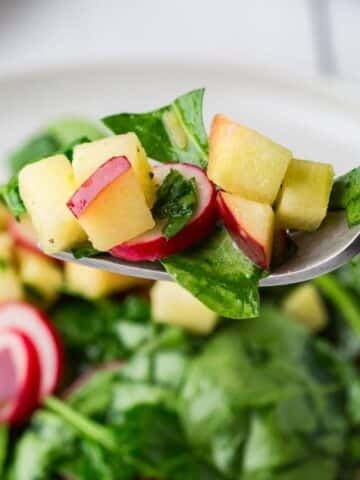 Radish Apple Salad
Radish Apple Salad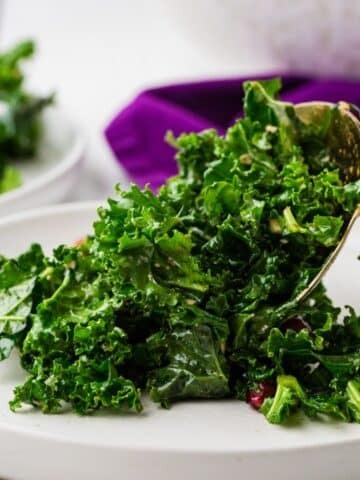 Kale and Pomegranate Salad
Kale and Pomegranate Salad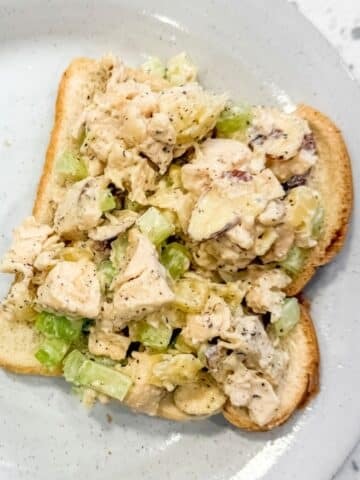 Hawaiian Chicken Salad
Hawaiian Chicken Salad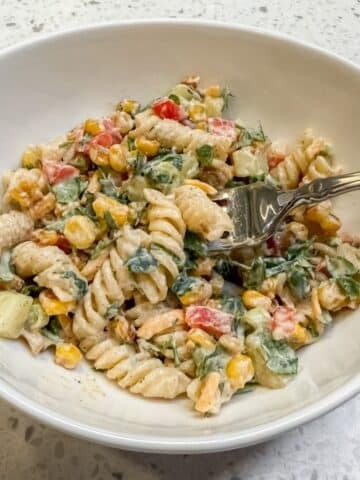 Corn Pasta SaladPairing with Desserts for CKD
Corn Pasta SaladPairing with Desserts for CKDThese are my favorite dishes to serve with Radish Apple Salad:
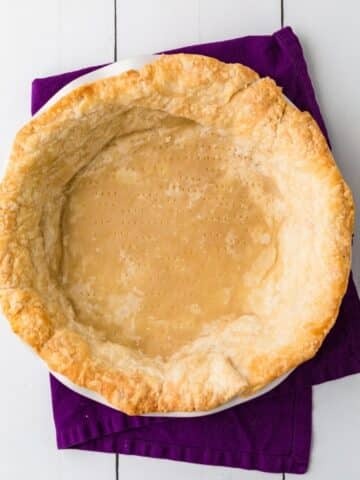 Low Sodium Pie Crust
Low Sodium Pie Crust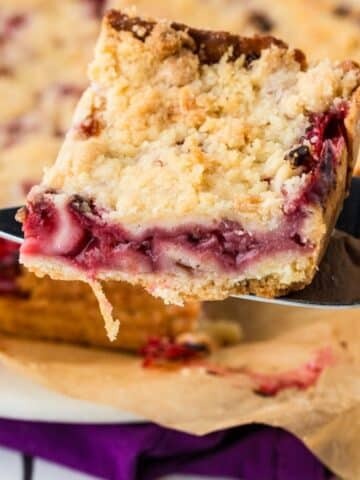 Strawberry Rhubarb Tart
Strawberry Rhubarb Tart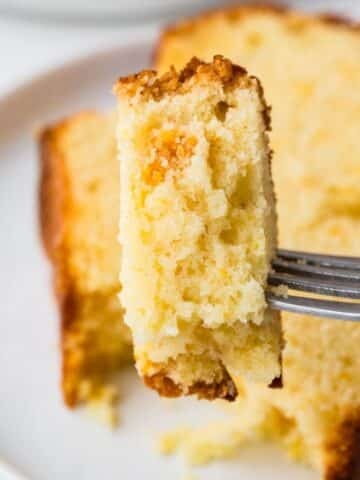 Tangerine Cake
Tangerine Cake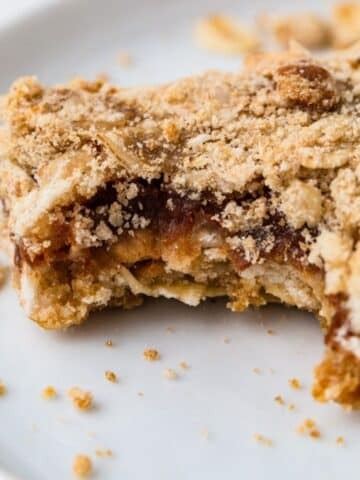 Healthy Oatmeal Date Bars
Healthy Oatmeal Date BarsIf you tried this Recipe or any other recipe on my website, please please leave a star rating and let me know how it goes in the comments below. I love hearing from you!
Recipe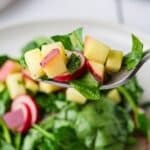 PrintRadish and Apple Salad Recipe#wprm-recipe-user-rating-0 .wprm-rating-star.wprm-rating-star-full svg * { fill: #343434; }#wprm-recipe-user-rating-0 .wprm-rating-star.wprm-rating-star-33 svg * { fill: url(#wprm-recipe-user-rating-0-33); }#wprm-recipe-user-rating-0 .wprm-rating-star.wprm-rating-star-50 svg * { fill: url(#wprm-recipe-user-rating-0-50); }#wprm-recipe-user-rating-0 .wprm-rating-star.wprm-rating-star-66 svg * { fill: url(#wprm-recipe-user-rating-0-66); }linearGradient#wprm-recipe-user-rating-0-33 stop { stop-color: #343434; }linearGradient#wprm-recipe-user-rating-0-50 stop { stop-color: #343434; }linearGradient#wprm-recipe-user-rating-0-66 stop { stop-color: #343434; }#wprm-recipe-user-rating-0.wprm-user-rating-allowed.wprm-user-rating-not-voted:not(.wprm-user-rating-voting) svg * { fill-opacity: 0.3; }This Radish Apple Salad brings together crisp radishes, sweet apples, and fresh spinach greens for a refreshing and vibrant dish. Tossed with a tangy homemade dressing, itâs an easy way to enjoy a burst of flavors and healthy ingredients.Course Appetizer, Salad, Side DishCuisine AmericanDiet Diabetic, Low Calorie, Low Fat, Low Lactose, Low Salt, VegetarianPrep Time 15 minutes minutesServings 2Calories 126kcalAuthor Mathea Ford, RDN, LD, MBAEquipment1 Vegetable Chopper1 Large BowlIngredientsSalad Mix1 cup sliced radishes1 cup apple chopped2 cups spinach greensDressing1 tablespoon olive oil1.5 tablespoon apple cider vinegar1 teaspoon honey½ teaspoon Dijon mustard½ teaspoon black pepperGet ingredients with
PrintRadish and Apple Salad Recipe#wprm-recipe-user-rating-0 .wprm-rating-star.wprm-rating-star-full svg * { fill: #343434; }#wprm-recipe-user-rating-0 .wprm-rating-star.wprm-rating-star-33 svg * { fill: url(#wprm-recipe-user-rating-0-33); }#wprm-recipe-user-rating-0 .wprm-rating-star.wprm-rating-star-50 svg * { fill: url(#wprm-recipe-user-rating-0-50); }#wprm-recipe-user-rating-0 .wprm-rating-star.wprm-rating-star-66 svg * { fill: url(#wprm-recipe-user-rating-0-66); }linearGradient#wprm-recipe-user-rating-0-33 stop { stop-color: #343434; }linearGradient#wprm-recipe-user-rating-0-50 stop { stop-color: #343434; }linearGradient#wprm-recipe-user-rating-0-66 stop { stop-color: #343434; }#wprm-recipe-user-rating-0.wprm-user-rating-allowed.wprm-user-rating-not-voted:not(.wprm-user-rating-voting) svg * { fill-opacity: 0.3; }This Radish Apple Salad brings together crisp radishes, sweet apples, and fresh spinach greens for a refreshing and vibrant dish. Tossed with a tangy homemade dressing, itâs an easy way to enjoy a burst of flavors and healthy ingredients.Course Appetizer, Salad, Side DishCuisine AmericanDiet Diabetic, Low Calorie, Low Fat, Low Lactose, Low Salt, VegetarianPrep Time 15 minutes minutesServings 2Calories 126kcalAuthor Mathea Ford, RDN, LD, MBAEquipment1 Vegetable Chopper1 Large BowlIngredientsSalad Mix1 cup sliced radishes1 cup apple chopped2 cups spinach greensDressing1 tablespoon olive oil1.5 tablespoon apple cider vinegar1 teaspoon honey½ teaspoon Dijon mustard½ teaspoon black pepperGet ingredients with  InstructionsRemove the leafy tops to the radishes and then rinse them, rubbing off any dirt. Thinly slice the radishes.Wash the apple and chop into small pieces after removing the core.Rinse and dry the spinach if necessary. Tear spinach leaves into smaller pieces.Combine the ingredients for the dressing in a mason jar (olive oil, vinegar, honey, mustard and pepper) and shake well to combine.Add the radishes, apple and spinach to a bowl. Add dressing and toss together until all parts of the mixture are coated well. Massage the spinach mixture for about 2 minutes. Divide into 2 servings and enjoy.NutritionCalories: 126kcal | Carbohydrates: 15g | Protein: 2g | Fat: 7g | Saturated Fat: 1g | Polyunsaturated Fat: 1g | Monounsaturated Fat: 5g | Sodium: 62mg | Potassium: 388mg | Fiber: 3g | Sugar: 11g | Vitamin A: 2855IU | Vitamin C: 20mg | Calcium: 52mg | Iron: 1mg | Phosphorus: 36mgCheck Out Our Meal Plans For People With Chronic Kidney Disease (CKD)
InstructionsRemove the leafy tops to the radishes and then rinse them, rubbing off any dirt. Thinly slice the radishes.Wash the apple and chop into small pieces after removing the core.Rinse and dry the spinach if necessary. Tear spinach leaves into smaller pieces.Combine the ingredients for the dressing in a mason jar (olive oil, vinegar, honey, mustard and pepper) and shake well to combine.Add the radishes, apple and spinach to a bowl. Add dressing and toss together until all parts of the mixture are coated well. Massage the spinach mixture for about 2 minutes. Divide into 2 servings and enjoy.NutritionCalories: 126kcal | Carbohydrates: 15g | Protein: 2g | Fat: 7g | Saturated Fat: 1g | Polyunsaturated Fat: 1g | Monounsaturated Fat: 5g | Sodium: 62mg | Potassium: 388mg | Fiber: 3g | Sugar: 11g | Vitamin A: 2855IU | Vitamin C: 20mg | Calcium: 52mg | Iron: 1mg | Phosphorus: 36mgCheck Out Our Meal Plans For People With Chronic Kidney Disease (CKD)The post Radish Apple Salad appeared first on Renal Diet HQ.
April 16, 2025
Plant-Based Meats vs Animal Proteins for Kidney Health?-Podcast

When managing chronic kidney disease (CKD), one of the most important dietary decisions you can make is your choice of protein. The type of protein you consume can significantly impact your kidney healthâso understanding the differences between plant-based and animal-based proteins is crucial.
Letâs take a closer look at how plant-based proteins and meat alternatives compare to traditional animal proteins, especially for people living with CKD.
For More Recipes and Ideas --->> Get Your Free Meals and Recipes That Are Perfect for Pre-Dialysis Diets, Pre-Dialysis with Diabetes, or Dialysis Diets.
Why Protein Type Matters for CKDFor people with chronic kidney disease, the kidneys are already working harder than usual. One way to support kidney function is by choosing proteins that place less stress on the kidneys.
Animal proteinsâlike beef, chicken, and porkâtend to produce more acid and waste products when broken down by the body. This additional burden can be challenging for kidneys that are already compromised.
On the other hand, plant-based proteins are generally easier on the kidneys, making them a smarter option for many people with CKD.
Benefits of Plant-Based ProteinsPlant-based protein sources like lentils, beans, tofu, and peas not only create fewer waste products but also offer additional health benefits. Theyâre rich in:
Fiber â Supports digestion and heart health.Antioxidants â Help reduce inflammation and protect cells.Vitamins and minerals â Essential for overall health.For those with kidney disease, switching to more plant-based proteins can help reduce kidney strain while improving overall nutrition.
Considerations for Plant-Based Meat AlternativesYou might be wondering about meat alternatives like Beyond Meat or the Impossible Burger. These are convenient and can be a tasty way to make the switch from animal to plant-based proteins.
However, not all plant-based meats are created equal. Some of these products are highly processed and may contain high amounts of sodiumâsomething people with CKD need to watch closely, especially if they also have high blood pressure.
Tips for Choosing Kidney-Friendly Plant-Based OptionsHereâs how to make smart choices when selecting plant-based proteins:Check sodium content. Choose products labeled as âlow sodiumâ or compare nutrition labels to find the best option.Limit processed items. Whole-food plant proteins like beans, lentils, and tofu are generally healthier than packaged alternatives.Balance your meals. Pair plant-based meats with vegetables, whole grains, and healthy fats for a complete, kidney-friendly meal.Plant-based proteins and meat alternatives can be excellent options for supporting kidney healthâif you choose wisely. They typically produce fewer waste products and come with added nutrients that benefit your overall health.
But remember: not all plant-based meats are equal. Be mindful of sodium levels and opt for less processed options when possible.
By understanding the impact of your protein choices, you can take meaningful steps toward protecting your kidneys and enjoying a nutritious, satisfying diet.
ð Looking for More Kidney-Friendly Nutrition Tips?For more insights and meal ideas, visit RenalDietHQ.com.
Learn more about Low-Salt Breakfast Ideas for Renal Diets: Start Your Day Kidney-Friendly!-Podcast
The post Plant-Based Meats vs Animal Proteins for Kidney Health?-Podcast appeared first on Renal Diet HQ.
April 11, 2025
Can You Eat Grapefruit on a Renal Diet? Find Out Now!-Podcast

Living with chronic kidney disease (CKD) often means making thoughtful food choicesâand one fruit that raises questions is grapefruit. Known for its vibrant flavor and powerful nutrients, grapefruit might seem like a healthy go-to, but if you're managing kidney disease, there are a few important things to consider.
For More Recipes and Ideas --->> Get Your Free Meals and Recipes That Are Perfect for Pre-Dialysis Diets, Pre-Dialysis with Diabetes, or Dialysis Diets.
The Nutritional Power of GrapefruitGrapefruit stands out with its bright color and sweet-tart flavor, making it a refreshing addition to any meal or snack. But thereâs more to this citrus fruit than just taste:
â Rich in antioxidants like vitamin C, which supports immune functionâ Naturally low in caloriesâ Sodium-free, making it appealing to those on sodium-restricted dietsFor people with kidney disease who want to add variety to their meals without turning to high-sodium seasonings, grapefruit can offer a natural burst of flavor. Itâs also a smart way to enjoy sweetness without added sugars or processed ingredients.
Grapefruit and Kidney Disease: A Word of Caution â ï¸Despite its health perks, grapefruit isnât the best choice for everyone with kidney diseaseâespecially if you're on certain medications.
Why? Grapefruit contains compounds that interfere with an enzyme in your body responsible for breaking down many medications. This means that eating grapefruit can increase the levels of these drugs in your bloodstream, possibly leading to side effects or harmful interactions.
For people managing CKD, this can be especially risky. Certain blood pressure medications, cholesterol-lowering statins, and immunosuppressants (often prescribed after kidney transplants) are just a few examples of drugs that can be affected by grapefruit.
Should You Avoid Grapefruit? Talk to a Dietitian ð©ââï¸ð½ï¸This is where personalized nutrition advice becomes essential.
A registered dietitian or healthcare provider can help you understand:
Which medications youâre taking that may interact with grapefruitHow much grapefruit (if any) is safe to consumeWhether other citrus fruits could be safer alternativesJust because grapefruit might be risky for some doesnât mean itâs completely off the table for everyone. But itâs crucial to get tailored advice based on your individual health and medication profile.
Final Thoughts: Enjoying Grapefruit Responsibly ðâSo, can people with kidney disease eat grapefruit? The answer depends on your medications and overall health needs.
Hereâs a quick recap:
â Grapefruit is nutritious and naturally low in sodiumâ ï¸ But it can interact with many medicationsâsometimes dangerouslyð©ââï¸ Consult with your doctor or dietitian before adding it to your dietIn a kidney-friendly lifestyle, informed choices are everything. By understanding the pros and cons of grapefruit and getting the right support, you can enjoy the foods you loveâsafely.
ð Looking for More Kidney-Friendly Nutrition Tips?Learn more about Is it okay to include nuts and seeds in my CKD diet, and how do I control portion sizes?-Podcast
The post Can You Eat Grapefruit on a Renal Diet? Find Out Now!-Podcast appeared first on Renal Diet HQ.
April 10, 2025
Caramelized Onion Quiche
Satisfy your taste buds with this simple, savory caramelized onion quiche recipe tailored for low-sodium diets. Ideal for caregiving cooks seeking an easy, kidney-friendly meal option.
For individuals managing kidney disease, finding delicious meals that align with dietary restrictions can be a challenge. Enter this low-sodium caramelized onion bacon quicheâan ideal solution for those seeking to enjoy a savory, satisfying dish without compromising on taste. Crafted with kidney health in mind, this recipe combines the rich flavors of caramelized onions and bacon with creamy Swiss cheese, all nestled in a tender, low-sodium pie crust.
As a Registered Dietitian with over 25 years of experience and personal ties to chronic kidney disease, I create kidney-friendly recipes that balance flavor and dietary needs. This quiche recipe follows low-sodium guidelines and uses evidence-based culinary nutrition principles, making it suitable for those with dietary restrictions. By incorporating caramelized onions and bacon, the dish aligns with contemporary renal diet standards while delivering rich flavors.

This onion quiche recipe is thoughtfully crafted to fit a Chronic Kidney Disease (CKD) diet, offering a flavorful yet low-sodium option that is essential for maintaining kidney health. By using a low-sodium pie crust and substituting regular milk with almond milk, the recipe helps reduce sodium and potassium intake, which is pivotal for individuals with CKD. Additionally, its use of whole, unprocessed ingredients contributes to a balanced and nutritious meal, making it an ideal choice for those mindful of their dietary needs.
In addition to this kidney friendly breakfast recipe, we have a mushroom and zucchini frittata or and arugula frittata if you like eggs for breakfast. You could also try our salmon omelet for some great omega 3's with a meal.
[feast_advanced_jump_to]Ingredients in Caramelised Onion QuicheIndulge your taste buds with this delectable caramelized onion and bacon quiche, using savory ingredients to create a mouth-watering masterpiece.
 Onion: Thinly sliced onions add a savory and slightly sweet flavor that complements the other ingredients in the pie crust.Butter: Butter provides richness and a buttery taste, enhancing the overall flavor and helping to sauté the onions.Olive Oil: Olive oil is used alongside butter to sauté the onions, adding a hint of fruitiness and healthy fats.Bacon: Bacon adds a smoky and savory flavor, contributing to the depth of taste and texture in the pie.Eggs: Eggs act as a binding agent, giving structure and stability to the pie while also adding richness.Heavy Cream: Heavy cream adds creaminess and a luxurious texture to the pie filling.Almond Milk: Almond milk is a healthier substitute for regular milk, providing a light and nutty flavor to the pie.Shredded Swiss Cheese: Swiss cheese melts beautifully and adds a nutty, sweet flavor that enriches the dish.Pepper: Pepper adds a hint of heat and spice, enhancing the flavor profile of the entire pie.Dry Mustard: Dry mustard introduces a subtle tanginess that balances the richness of the other ingredients in the pie.
Onion: Thinly sliced onions add a savory and slightly sweet flavor that complements the other ingredients in the pie crust.Butter: Butter provides richness and a buttery taste, enhancing the overall flavor and helping to sauté the onions.Olive Oil: Olive oil is used alongside butter to sauté the onions, adding a hint of fruitiness and healthy fats.Bacon: Bacon adds a smoky and savory flavor, contributing to the depth of taste and texture in the pie.Eggs: Eggs act as a binding agent, giving structure and stability to the pie while also adding richness.Heavy Cream: Heavy cream adds creaminess and a luxurious texture to the pie filling.Almond Milk: Almond milk is a healthier substitute for regular milk, providing a light and nutty flavor to the pie.Shredded Swiss Cheese: Swiss cheese melts beautifully and adds a nutty, sweet flavor that enriches the dish.Pepper: Pepper adds a hint of heat and spice, enhancing the flavor profile of the entire pie.Dry Mustard: Dry mustard introduces a subtle tanginess that balances the richness of the other ingredients in the pie.See recipe card for quantities.
How to Make Caramelized Onion Bacon QuicheGet ready to impress your taste buds with this delicious cheese and onion quiche with cream! Follow these easy steps to create a savory masterpiece that's perfect for any meal.
 Preheat oven to 400'F. If pie crust is cold or refrigerated, remove from refrigerator and let it sit at room temperature while you cook the onions. In a large skillet, melt butter. Add olive oil and sliced onions.Cook, stirring occasionally, for 15 minutes on low until soft then another 15 minutes. If browning too much, you can add a ½ cup water. Once done, put on paper towels and cover well to remove moisture.
Preheat oven to 400'F. If pie crust is cold or refrigerated, remove from refrigerator and let it sit at room temperature while you cook the onions. In a large skillet, melt butter. Add olive oil and sliced onions.Cook, stirring occasionally, for 15 minutes on low until soft then another 15 minutes. If browning too much, you can add a ½ cup water. Once done, put on paper towels and cover well to remove moisture. Add the pie crust to a pie pan and remove excess crust from edges. Prick bottom of crust with a fork to prevent puffing. Bake in oven for 10 minutes. Remove from oven and allow it to cool to room temperature.Reduce oven temperature to 375'F.
Add the pie crust to a pie pan and remove excess crust from edges. Prick bottom of crust with a fork to prevent puffing. Bake in oven for 10 minutes. Remove from oven and allow it to cool to room temperature.Reduce oven temperature to 375'F. While crust is baking, cook bacon over medium heat until fairly crisp and most of the fat is rendered. But not too crisp. Remove from pan and set aside to cool. Pat with a paper towel to absorb excess fat.In a large mixing bowl, beat together the eggs, cream, almond milk, cheese, pepper and mustard.
While crust is baking, cook bacon over medium heat until fairly crisp and most of the fat is rendered. But not too crisp. Remove from pan and set aside to cool. Pat with a paper towel to absorb excess fat.In a large mixing bowl, beat together the eggs, cream, almond milk, cheese, pepper and mustard. Chop bacon into bite sized pieces and add to mixture in the bowl.Add onions to bottom of pie crust, spread evenly.
Chop bacon into bite sized pieces and add to mixture in the bowl.Add onions to bottom of pie crust, spread evenly. Pour egg mixture over the onions into the pie crust.Bake for 35-45 minutes or until only slightly jiggly in the middle. Remove from oven and allow it to sit for 12-15 minutes to allow it to set.
Pour egg mixture over the onions into the pie crust.Bake for 35-45 minutes or until only slightly jiggly in the middle. Remove from oven and allow it to sit for 12-15 minutes to allow it to set. Cut into 8 pieces and enjoy.
Cut into 8 pieces and enjoy.Hint: Plan Ahead: Caramelizing onions takes time, about 30 minutes in total. Be patient and cook them on low heat to bring out their natural sweetness. This can be done well in advance â even the day before â to save time when assembling the quiche.
Substitutions in Caramelized Onion QuicheEnjoy a delicious twist on a classic dish with this caramelized onion and bacon quiche. This flavorful quiche combines the natural sweetness of caramelized onions with savory bacon and creamy Swiss cheese. It's perfect for any meal and serves up to eight people. Here are a few modifications to make it more friendly for those following a kidney-friendly diet:
Use Low-Sodium Cheese: Swap regular Swiss cheese with a low-sodium version to reduce the overall sodium content while keeping the creamy texture and rich flavor you love.Try Turkey Bacon: Substitute turkey bacon for regular bacon to reduce the saturated fat and sodium while still delivering that delicious smoky taste.By incorporating these adjustments, you can enjoy a scrumptious onion and cheese quiche that aligns with your dietary needs.
 Storage Tips for Caramelized Onion Quiche
Storage Tips for Caramelized Onion QuicheTo savor your onion and cheese quiche with cream later, follow these storage tips.
Once cooled, wrap the quiche tightly in plastic wrap or place it in an airtight container. It will stay fresh in the refrigerator for up to 3 days. For freezer storage, wrap individual slices in aluminum foil and seal them in a freezer bag. Store in the freezer for up to 2 months. When you're ready to enjoy, thaw in the refrigerator overnight and reheat in the oven at 350°F until warmed through. Avoid microwaving to maintain the best texture.These storage tips ensure that your low potassium quiche stays fresh and ready for whenever you crave a nutritious and satisfying meal.
Top TipDairy Alternatives: If youâre looking for a dairy-free version, substitute the heavy cream with coconut cream and use a dairy-free cheese alternative to maintain the creamy consistency without dairy.FAQ's for Caramelized Onion QuicheCan I use a store-bought pie crust for this caramelized onion and bacon quiche?Yes, you can use a store-bought low sodium pie crust for convenience. Just make sure to let it sit at room temperature if it's been in the refrigerator, and follow the instructions to prevent puffing by pricking the bottom with a fork before baking.
To prevent the onions from burning while caramelizing, cook them on low heat. Stir occasionally and if you notice they're browning too much, add ½ cup of water to the pan. Caramelizing the onions should take around 30 minutes to achieve the perfect softness and sweetness.
If you prefer not to use almond milk, you can substitute it with regular cow's milk or any other non-dairy milk of your choice, such as soy or oat milk. Ensure that the milk you choose complements the flavors of the caramelized onion and bacon quiche.
Can I make this quiche ahead of time?Yes, you can make this onion and cheese quiche ahead of time. You can prepare the pie crust, caramelize the onions, and cook the bacon a day in advance. Assemble and bake the quiche the next day. After baking, you can also refrigerate it and reheat slices as needed.
Looking for other recipes like this onion quiche recipe? Try these:
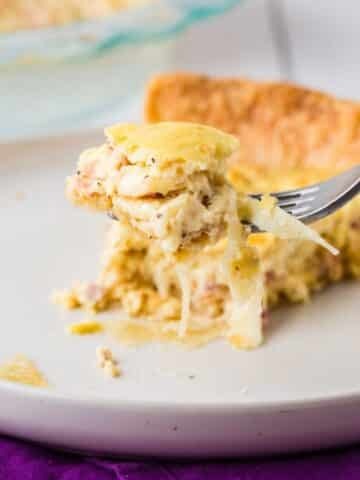 Caramelized Onion Quiche
Caramelized Onion Quiche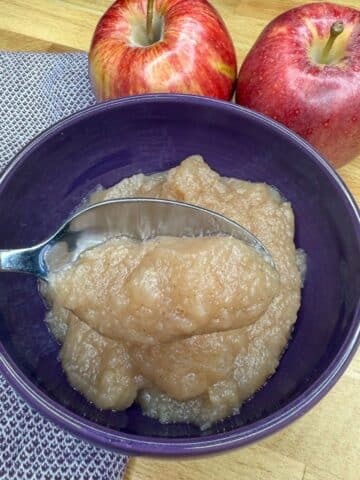 Sugar Free Applesauce
Sugar Free Applesauce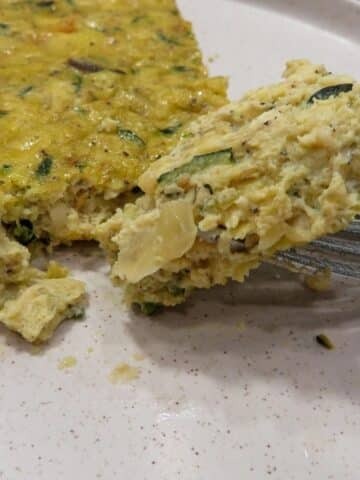 Zucchini Mushroom Frittata
Zucchini Mushroom Frittata Dairy-Free Cinnamon RollsPairing with Side Dishes for Kidney Disease
Dairy-Free Cinnamon RollsPairing with Side Dishes for Kidney DiseaseThese are my favorite dishes to serve with Caramelized Onion Quiche:
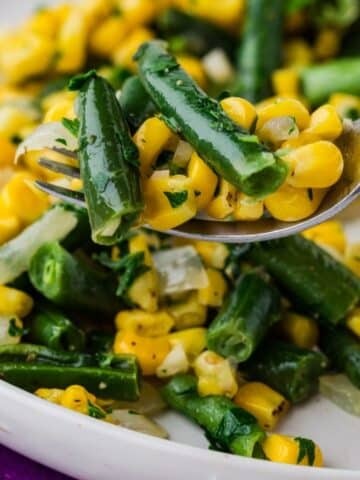 Green Beans and Corn
Green Beans and Corn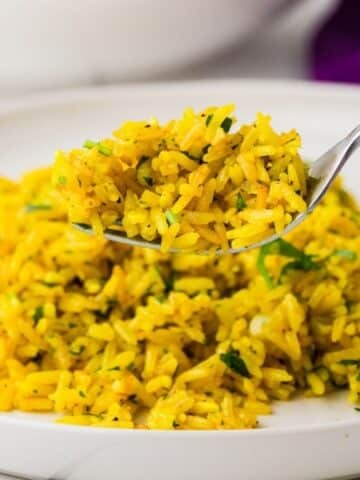 Garlic Turmeric Rice
Garlic Turmeric Rice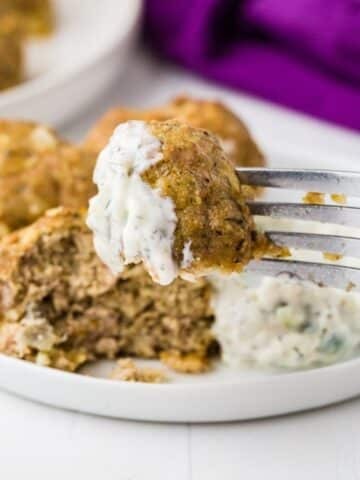 Greek Turkey Meatballs
Greek Turkey Meatballs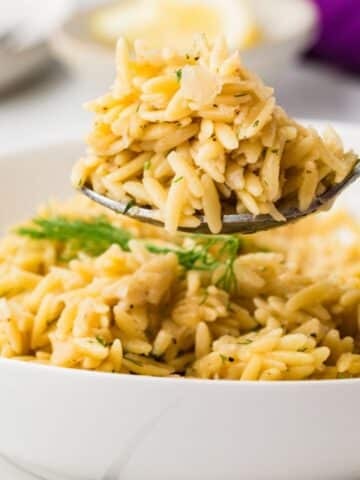 Orzo Pilaf
Orzo PilafIf you tried this Recipe or any other recipe on my website, please please leave a star rating and let me know how it goes in the comments below. I love hearing from you!
Recipe PrintCarmelized Onion Bacon Quiche#wprm-recipe-user-rating-1 .wprm-rating-star.wprm-rating-star-full svg * { fill: #343434; }#wprm-recipe-user-rating-1 .wprm-rating-star.wprm-rating-star-33 svg * { fill: url(#wprm-recipe-user-rating-1-33); }#wprm-recipe-user-rating-1 .wprm-rating-star.wprm-rating-star-50 svg * { fill: url(#wprm-recipe-user-rating-1-50); }#wprm-recipe-user-rating-1 .wprm-rating-star.wprm-rating-star-66 svg * { fill: url(#wprm-recipe-user-rating-1-66); }linearGradient#wprm-recipe-user-rating-1-33 stop { stop-color: #343434; }linearGradient#wprm-recipe-user-rating-1-50 stop { stop-color: #343434; }linearGradient#wprm-recipe-user-rating-1-66 stop { stop-color: #343434; }#wprm-recipe-user-rating-1.wprm-user-rating-allowed.wprm-user-rating-not-voted:not(.wprm-user-rating-voting) svg * { fill-opacity: 0.3; }Create a delicious caramelized onion, bacon, and Swiss cheese quiche with a low-sodium pie crust, perfect for a cozy meal. With easy-to-follow steps, this recipe guides you through achieving a savory dish with rich flavors and a satisfying texture.Course Appetizer, Breakfast, Entree, Main CourseCuisine American, FrenchDiet Diabetic, Low Calorie, Low Fat, Low SaltPrep Time 15 minutes minutesCook Time 1 hour hour 30 minutes minutesServings 8Calories 210kcalAuthor Mathea Ford, RDN, LD, MBAEquipment1 Pie Pan1 Skillet1 Large BowlIngredients1 Low Sodium Pie Crust1 ½ cup onion thinly sliced2 tablespoon butter1 tablespoon olive oil4 pieces of bacon4 large eggs½ cup heavy cream1 cup almond milk1 cup shredded Swiss cheese½ teaspoon pepper½ teaspoon dry mustardGet ingredients with
PrintCarmelized Onion Bacon Quiche#wprm-recipe-user-rating-1 .wprm-rating-star.wprm-rating-star-full svg * { fill: #343434; }#wprm-recipe-user-rating-1 .wprm-rating-star.wprm-rating-star-33 svg * { fill: url(#wprm-recipe-user-rating-1-33); }#wprm-recipe-user-rating-1 .wprm-rating-star.wprm-rating-star-50 svg * { fill: url(#wprm-recipe-user-rating-1-50); }#wprm-recipe-user-rating-1 .wprm-rating-star.wprm-rating-star-66 svg * { fill: url(#wprm-recipe-user-rating-1-66); }linearGradient#wprm-recipe-user-rating-1-33 stop { stop-color: #343434; }linearGradient#wprm-recipe-user-rating-1-50 stop { stop-color: #343434; }linearGradient#wprm-recipe-user-rating-1-66 stop { stop-color: #343434; }#wprm-recipe-user-rating-1.wprm-user-rating-allowed.wprm-user-rating-not-voted:not(.wprm-user-rating-voting) svg * { fill-opacity: 0.3; }Create a delicious caramelized onion, bacon, and Swiss cheese quiche with a low-sodium pie crust, perfect for a cozy meal. With easy-to-follow steps, this recipe guides you through achieving a savory dish with rich flavors and a satisfying texture.Course Appetizer, Breakfast, Entree, Main CourseCuisine American, FrenchDiet Diabetic, Low Calorie, Low Fat, Low SaltPrep Time 15 minutes minutesCook Time 1 hour hour 30 minutes minutesServings 8Calories 210kcalAuthor Mathea Ford, RDN, LD, MBAEquipment1 Pie Pan1 Skillet1 Large BowlIngredients1 Low Sodium Pie Crust1 ½ cup onion thinly sliced2 tablespoon butter1 tablespoon olive oil4 pieces of bacon4 large eggs½ cup heavy cream1 cup almond milk1 cup shredded Swiss cheese½ teaspoon pepper½ teaspoon dry mustardGet ingredients with  InstructionsPreheat oven to 400'F. If pie crust is cold or refrigerated, remove from refrigerator and let it sit at room temperature while you cook the onions. In a large skillet, melt butter. Add olive oil and sliced onions.Cook, stirring occasionally, for 15 minutes on low until soft then another 15 minutes. If browning too much, you can add a ½ cup water. Once done, put on paper towels and cover well to remove moisture.Add the pie crust to a pie pan and remove excess crust from edges. Prick bottom of crust with a fork to prevent puffing. Bake in oven for 10 minutes. Remove from oven and allow it to cool to room temperature.Reduce oven temperature to 375'F.While crust is baking, cook bacon over medium heat until fairly crisp and most of the fat is rendered. But not too crisp. Remove from pan and set aside to cool. Pat with a paper towel to absorb excess fat.In a large mixing bowl, beat together the eggs, cream, almond milk, cheese, pepper and mustard.Chop bacon into bite sized pieces and add to mixture in the bowl.Add onions to bottom of pie crust, spread evenly.Pour egg mixture over the onions into the pie crust.Bake for 35-45 minutes or until only slightly jiggly in the middle. Remove from oven and allow it to sit for 12-15 minutes to allow it to set.Cut into 8 pieces and enjoy.NutritionCalories: 210kcal | Carbohydrates: 5g | Protein: 8g | Fat: 18g | Saturated Fat: 9g | Polyunsaturated Fat: 1g | Monounsaturated Fat: 6g | Trans Fat: 0.2g | Cholesterol: 122mg | Sodium: 135mg | Potassium: 104mg | Fiber: 1g | Sugar: 2g | Vitamin A: 572IU | Vitamin C: 2mg | Vitamin D: 1µg | Calcium: 189mg | Iron: 1mg | Phosphorus: 143mgCheck Out Our Meal Plans For People With Chronic Kidney Disease (CKD)
InstructionsPreheat oven to 400'F. If pie crust is cold or refrigerated, remove from refrigerator and let it sit at room temperature while you cook the onions. In a large skillet, melt butter. Add olive oil and sliced onions.Cook, stirring occasionally, for 15 minutes on low until soft then another 15 minutes. If browning too much, you can add a ½ cup water. Once done, put on paper towels and cover well to remove moisture.Add the pie crust to a pie pan and remove excess crust from edges. Prick bottom of crust with a fork to prevent puffing. Bake in oven for 10 minutes. Remove from oven and allow it to cool to room temperature.Reduce oven temperature to 375'F.While crust is baking, cook bacon over medium heat until fairly crisp and most of the fat is rendered. But not too crisp. Remove from pan and set aside to cool. Pat with a paper towel to absorb excess fat.In a large mixing bowl, beat together the eggs, cream, almond milk, cheese, pepper and mustard.Chop bacon into bite sized pieces and add to mixture in the bowl.Add onions to bottom of pie crust, spread evenly.Pour egg mixture over the onions into the pie crust.Bake for 35-45 minutes or until only slightly jiggly in the middle. Remove from oven and allow it to sit for 12-15 minutes to allow it to set.Cut into 8 pieces and enjoy.NutritionCalories: 210kcal | Carbohydrates: 5g | Protein: 8g | Fat: 18g | Saturated Fat: 9g | Polyunsaturated Fat: 1g | Monounsaturated Fat: 6g | Trans Fat: 0.2g | Cholesterol: 122mg | Sodium: 135mg | Potassium: 104mg | Fiber: 1g | Sugar: 2g | Vitamin A: 572IU | Vitamin C: 2mg | Vitamin D: 1µg | Calcium: 189mg | Iron: 1mg | Phosphorus: 143mgCheck Out Our Meal Plans For People With Chronic Kidney Disease (CKD)The post Caramelized Onion Quiche appeared first on Renal Diet HQ.
April 9, 2025
Is it okay to include nuts and seeds in my CKD diet, and how do I control portion sizes?-Podcast

If youâve been diagnosed with Chronic Kidney Disease (CKD), you might be wondering: âCan I include nuts and seeds in my diet?â The good news isâyes, you can! But as with many things in a kidney-friendly diet, portion control and awareness of phosphorus are key.
Letâs break it down.
For More Recipes and Ideas --->> Get Your Free Meals and Recipes That Are Perfect for Pre-Dialysis Diets, Pre-Dialysis with Diabetes, or Dialysis Diets.
1. Nutritional Benefits of Nuts and SeedsNuts and seeds are often considered superfoods for good reason. Theyâre packed with:
Healthy fatsDietary fiberPlant-based proteinThese nutrients support heart health, digestion, and overall well-being. So even for those with CKD, they can be a nutritious addition to meals and snacksâas long as you're mindful of portions.
2. Why Phosphorus Matters for Kidney HealthWhile nuts and seeds offer plenty of benefits, they also naturally contain phosphorusâa mineral that people with CKD need to watch closely.
High phosphorus levels can be tough on the kidneys and lead to complications like:
Weak bonesItchy skinHeart problemsBut not all phosphorus is the sameâand thatâs where things get interesting.
3. Not All Phosphorus Is Absorbed the Same WayHereâs the key insight: The phosphorus found naturally in nuts and seeds isnât absorbed by your body as easily as the phosphorus additives in processed foods.
Thatâs because plant-based phosphorus is bound to something called phytates, which your body canât break down easily. As a result, you only absorb about 30â50% of the phosphorus from nuts and seeds.
In contrast, phosphorus additives (found in many processed foods) are almost completely absorbedâmaking them a bigger concern for kidney health.
4. Should You Avoid Nuts and Seeds Entirely?No, you donât have to avoid them!
In fact, including small amounts of nuts and seeds in your CKD diet can offer variety, flavor, and nutritionâwithout significantly raising your phosphorus intake.
The secret? Portion control.
5. Portion Guidelines for CKD-Friendly SnackingTo keep your phosphorus levels in check while enjoying the benefits of nuts and seeds, stick to:
A small handful of nuts (~1 ounce or 28 grams)2 tablespoons of nut butterThis keeps your serving size manageable and helps you get the most nutrition without overloading your kidneys.
Final Thoughts: Enjoy Nuts and SeedsâMindfullyNuts and seeds can be a delicious, healthy part of a kidney-conscious diet. Theyâre full of nutrients and fiberâbut like anything with CKD, moderation is key.
By choosing the right portion sizes and being mindful of phosphorus sources, you can still enjoy these foods as part of your daily meals.
Learn more about Top Fruits for CKD: Best Choices for Kidney Health!-Podcast
The post Is it okay to include nuts and seeds in my CKD diet, and how do I control portion sizes?-Podcast appeared first on Renal Diet HQ.
April 4, 2025
Top Fruits for CKD: Best Choices for Kidney Health!-Podcast

Taking care of your kidneys is essential for overall healthâespecially if youâre living with Chronic Kidney Disease (CKD). One of the most effective ways to manage CKD and slow its progression is through a carefully planned renal diet.
Fruits are often seen as healthy options, but not all fruits are equal when it comes to kidney health. Some fruits are high in potassium and phosphorus, two minerals that people with CKD often need to limit. Understanding which fruits are safe and beneficial can help you make smart, kidney-friendly choices without sacrificing flavor or nutrition.
For More Recipes and Ideas --->> Get Your Free Meals and Recipes That Are Perfect for Pre-Dialysis Diets, Pre-Dialysis with Diabetes, or Dialysis Diets.
Why Fruits Matter in a Renal DietFruits are packed with vitamins, antioxidants, and fiber, which are all important for maintaining good health. For individuals with CKD, however, itâs not just about the nutrientsâit's about balancing them.
Many fruits contain high levels of potassium and phosphorus. When your kidneys arenât functioning at full strength, these minerals can build up in your blood, leading to serious complications. Thatâs why itâs important to choose low-potassium fruits and limit or avoid those with higher levels.
Fruits to Enjoy in ModerationNot all fruits are off-limits. In fact, there are several that you can enjoyâespecially when eaten in moderation. These fruits are lower in potassium and are typically safe for people with kidney disease:
Apples â Crunchy, hydrating, and rich in fiber.Berries â Blueberries, strawberries, and raspberries are loaded with antioxidants and low in potassium.Grapes â A sweet snack thatâs kidney-friendly and easy to portion.These fruits can be enjoyed fresh, in smoothies, or as a simple dessert without overwhelming your potassium intake.
Fruits to Limit or AvoidWhile fruits offer many health benefits, some may do more harm than good for those with kidney disease. High-potassium fruits should be limited or avoided to prevent mineral buildup in the bloodstream. These include:
Bananas â A potassium powerhouse that can raise levels quickly.Oranges â While high in vitamin C, theyâre also high in potassium and can be hard on your kidneys.Instead of cutting out fruit completely, it's important to make informed choices based on your unique dietary needs.
Tips for Choosing Kidney-Friendly FruitsHere are a few practical tips to help you safely enjoy fruit on a renal diet:
Read labels â Especially with canned or dried fruits, which may contain added sugars or preservatives that arenât kidney-friendly.Control portions â Even low-potassium fruits can add up if consumed in large amounts.Talk to a renal dietitian â Personalized guidance can help you feel confident about what to eat and how much.Making small adjustments in your fruit choices can lead to big benefits for your kidney health.
Living with CKD doesnât mean giving up on delicious, refreshing fruit. By choosing kidney-friendly fruits like apples, berries, and grapes, and avoiding those high in potassium like bananas and oranges, you can maintain a satisfying and healthy diet that supports your kidneys.
With the right knowledge and a little planning, your renal diet can still include the natural sweetness and nutrition of fruitsâwithout compromising your health.
Learn more about How can I safely flavor my meals using herbs, spices, or salt substitutes?-Podcast
The post Top Fruits for CKD: Best Choices for Kidney Health!-Podcast appeared first on Renal Diet HQ.



